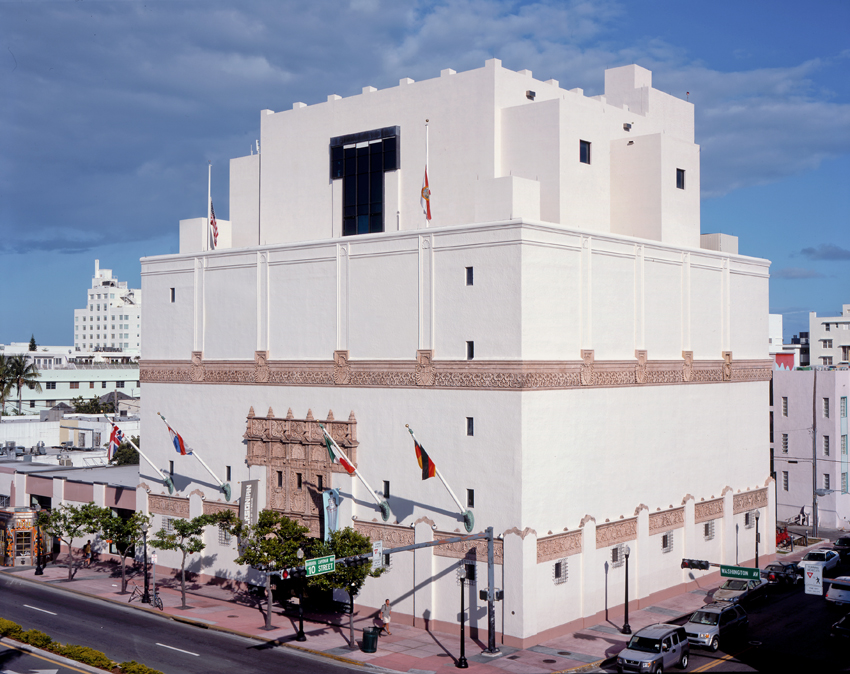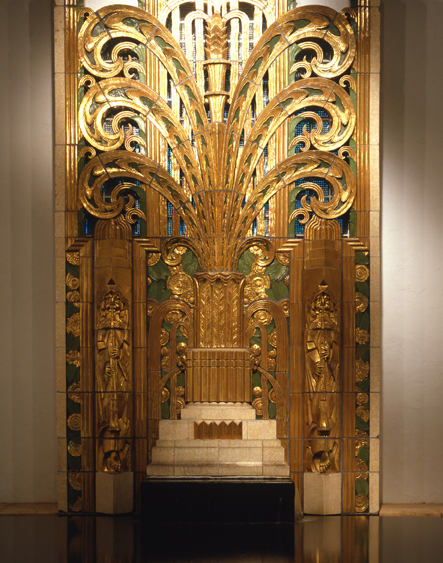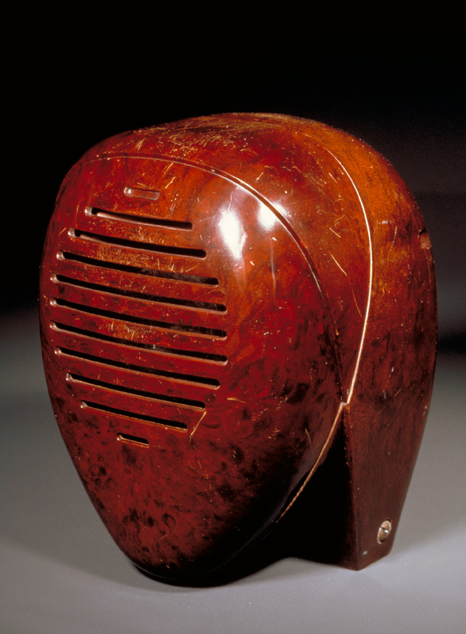In the 1980s, during one of his journeys from one continent to another, Mitchell “Micky” Wolfson began his heterogeneous decorative and propaganda arts collection and chose Miami, his birth town, as base for his creation, the Wolfsonian. He stored his immense collection in a warehouse in Miami Beach, in the heart of the so-called Art Deco District, a neighborhood partially unchanged thanks to a hard battle to preserve it, started at the end of the 1970s. The Washington Storage Company warehouse, built in 1927 by Robertson & Patterson in an Hispanic and Moorish style, is integrated in a context of residential buildings and hotels built between the 1920s and the 1940s, following the taste for Mediterranean revival typical of Miami at the beginning of the 1920s. At first, the warehouse was used to store the properties of the holidaymakers who, during the hurricane season, left Florida to get back to northern metropolises. Then, in 1986, when Mitchell Wolfson decided to buy it, the Washington Storage Building became the headquarters of the Wolfsonian. After a few years of restoration and refitting museum-wise by the famous architect Mark Hampton, the Wolfsonian was officially opened in 1995 and donated by its founder, two years later, to the Florida International University.
Meanwhile, Wolfson sets up in Genoa, the city where he began his diplomatic career, the “Wolfsoniana”, opened in 2005 and donated, two years later, to the Fondazione Regionale per la Cultura e lo Spettacolo. Both collections focus on the period 1885–1945 and include paintings, sculptures, decorative arts, furnishings, industrial design, graphics, architecture designs, archival material, magazines and rare books.
With respect to the Italian centred Genoese collection, the Wolfsonian goes from America to Europe and, in particular, Germany, The United Kingdom, Italy and The Netherlands, with a few references also to Asia and Africa, especially in relation to European colonization.
Micky Wolfson created both collections to valorise, study and preserve a determined historical period through objects and bibliographic and documentary material he collected during his life, and recently implemented by new donations.
The Wolfsonian aims at illustrating the power of persuasion of art and design, and at telling the social, political and technological changes of a period which goes from the Industrial Revolution to the end of World War II.
As you enter the Washington Storage Building, a stronghold of the city historical heritage, the museum tour starts in the lobby, characterized by the spectacular fountain made from the enamelled terracotta façade of the Norris Theatre in Norristown, Pennsylvania, a déco masterpiece by the architects W.H. Lee and A. Carroll – from Philadelphia. Various architectural elements and decorations of different origins were accurately integrated in the tour to document, at least partially, a heritage unfortunately cancelled also by recent demolitions: from the bronze windows and gratings of the Hengerer Department Store in Buffalo, New York, to the gates of the Fiera Campionaria in Milan, from the glass window commissioned by the Irish government in 1926 to the artist Harry Clarke as gift to the League of Nations in Geneva, to the wrought iron gate by Alessandro Mazzucotelli, realized for the Italian pavilion of the “Exposition Internationale des Arts Décoratifs et Industriels Modernes” of 1925 in Paris.
The path of the permanent exhibition, which develops on a hole floor of the building, focuses on some of the main themes of the Wolfsonian: the political propaganda of the dictatorial regimes, the expression of a national identity though artistic and architectonic research, the International exhibitions and world’s fairs; and, moreover, the evolution from the applied art to the industrial design, with some everlasting icons of the 1930s American production, such as the famous thermos with tray (Tray, model # 549) by Henry Dreyfuss, the sculptural Radio Nurse by Isamu Noguchi and the popular set, American Modern, by Russel Wright, whose fluid lines anticipate the organic shapes of the 1950s.
Meanwhile, Wolfson sets up in Genoa, the city where he began his diplomatic career, the “Wolfsoniana”, opened in 2005 and donated, two years later, to the Fondazione Regionale per la Cultura e lo Spettacolo. Both collections focus on the period 1885–1945 and include paintings, sculptures, decorative arts, furnishings, industrial design, graphics, architecture designs, archival material, magazines and rare books.
With respect to the Italian centred Genoese collection, the Wolfsonian goes from America to Europe and, in particular, Germany, The United Kingdom, Italy and The Netherlands, with a few references also to Asia and Africa, especially in relation to European colonization.
Micky Wolfson created both collections to valorise, study and preserve a determined historical period through objects and bibliographic and documentary material he collected during his life, and recently implemented by new donations.
The Wolfsonian aims at illustrating the power of persuasion of art and design, and at telling the social, political and technological changes of a period which goes from the Industrial Revolution to the end of World War II.
As you enter the Washington Storage Building, a stronghold of the city historical heritage, the museum tour starts in the lobby, characterized by the spectacular fountain made from the enamelled terracotta façade of the Norris Theatre in Norristown, Pennsylvania, a déco masterpiece by the architects W.H. Lee and A. Carroll – from Philadelphia. Various architectural elements and decorations of different origins were accurately integrated in the tour to document, at least partially, a heritage unfortunately cancelled also by recent demolitions: from the bronze windows and gratings of the Hengerer Department Store in Buffalo, New York, to the gates of the Fiera Campionaria in Milan, from the glass window commissioned by the Irish government in 1926 to the artist Harry Clarke as gift to the League of Nations in Geneva, to the wrought iron gate by Alessandro Mazzucotelli, realized for the Italian pavilion of the “Exposition Internationale des Arts Décoratifs et Industriels Modernes” of 1925 in Paris.
The path of the permanent exhibition, which develops on a hole floor of the building, focuses on some of the main themes of the Wolfsonian: the political propaganda of the dictatorial regimes, the expression of a national identity though artistic and architectonic research, the International exhibitions and world’s fairs; and, moreover, the evolution from the applied art to the industrial design, with some everlasting icons of the 1930s American production, such as the famous thermos with tray (Tray, model # 549) by Henry Dreyfuss, the sculptural Radio Nurse by Isamu Noguchi and the popular set, American Modern, by Russel Wright, whose fluid lines anticipate the organic shapes of the 1950s.


